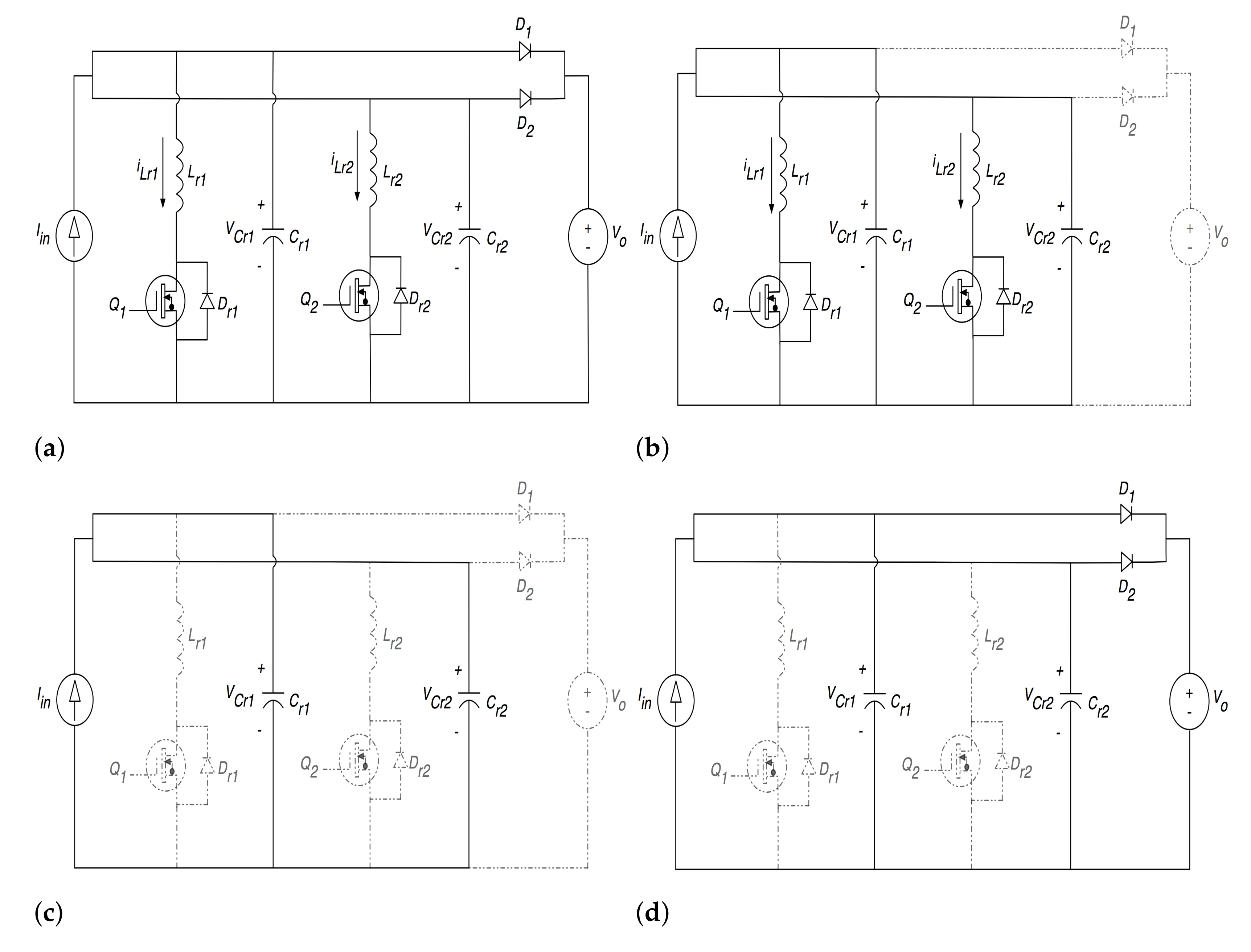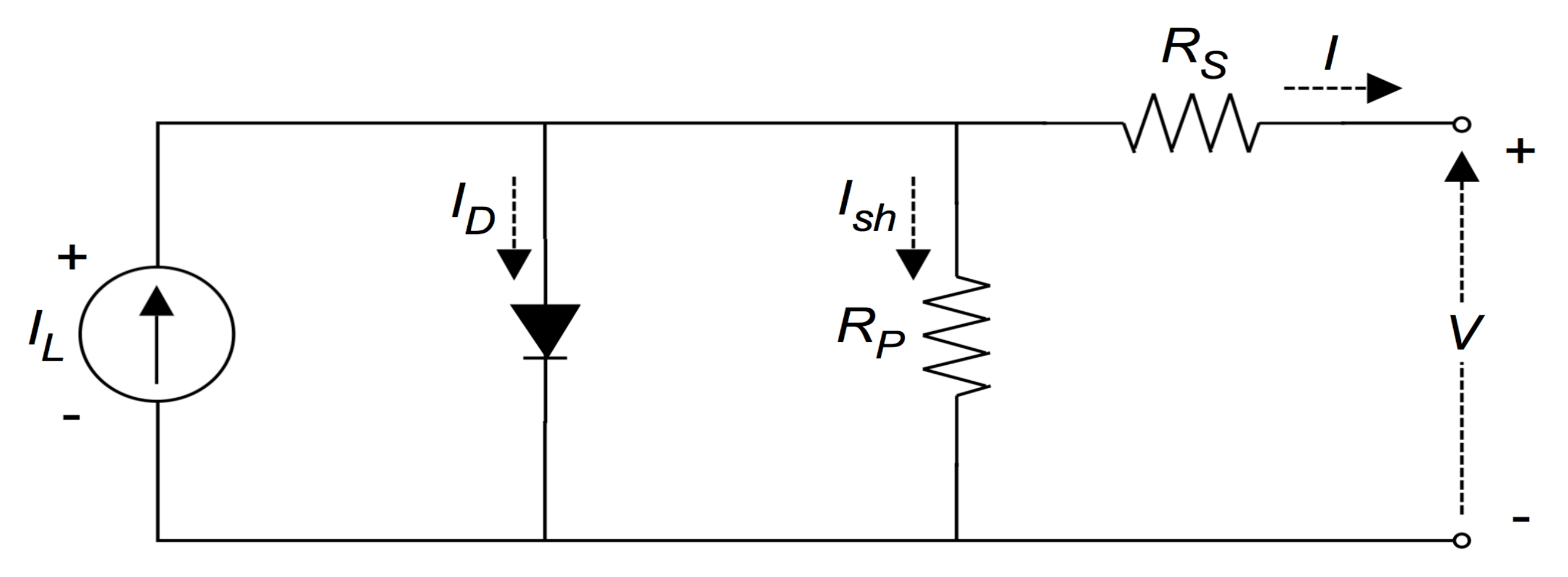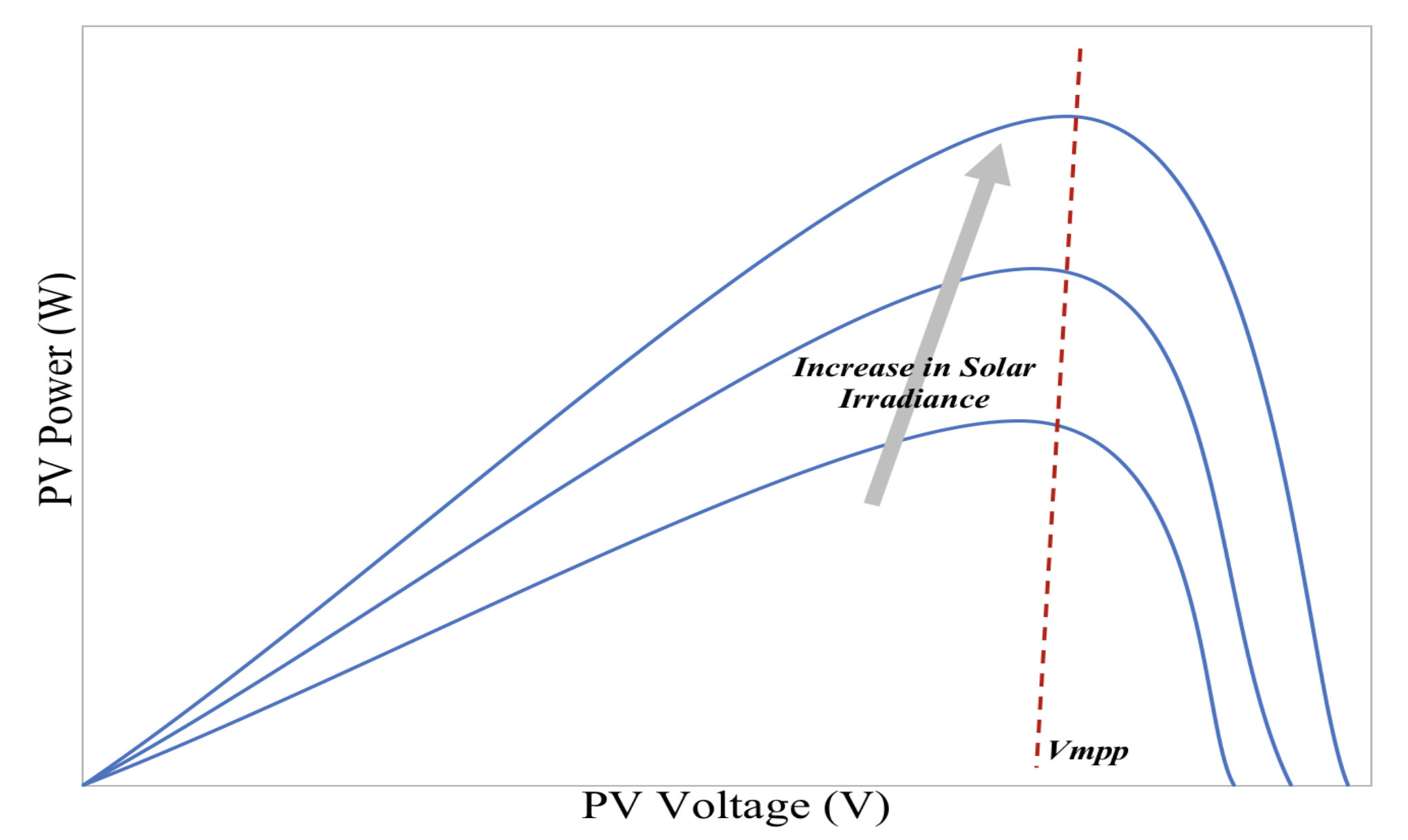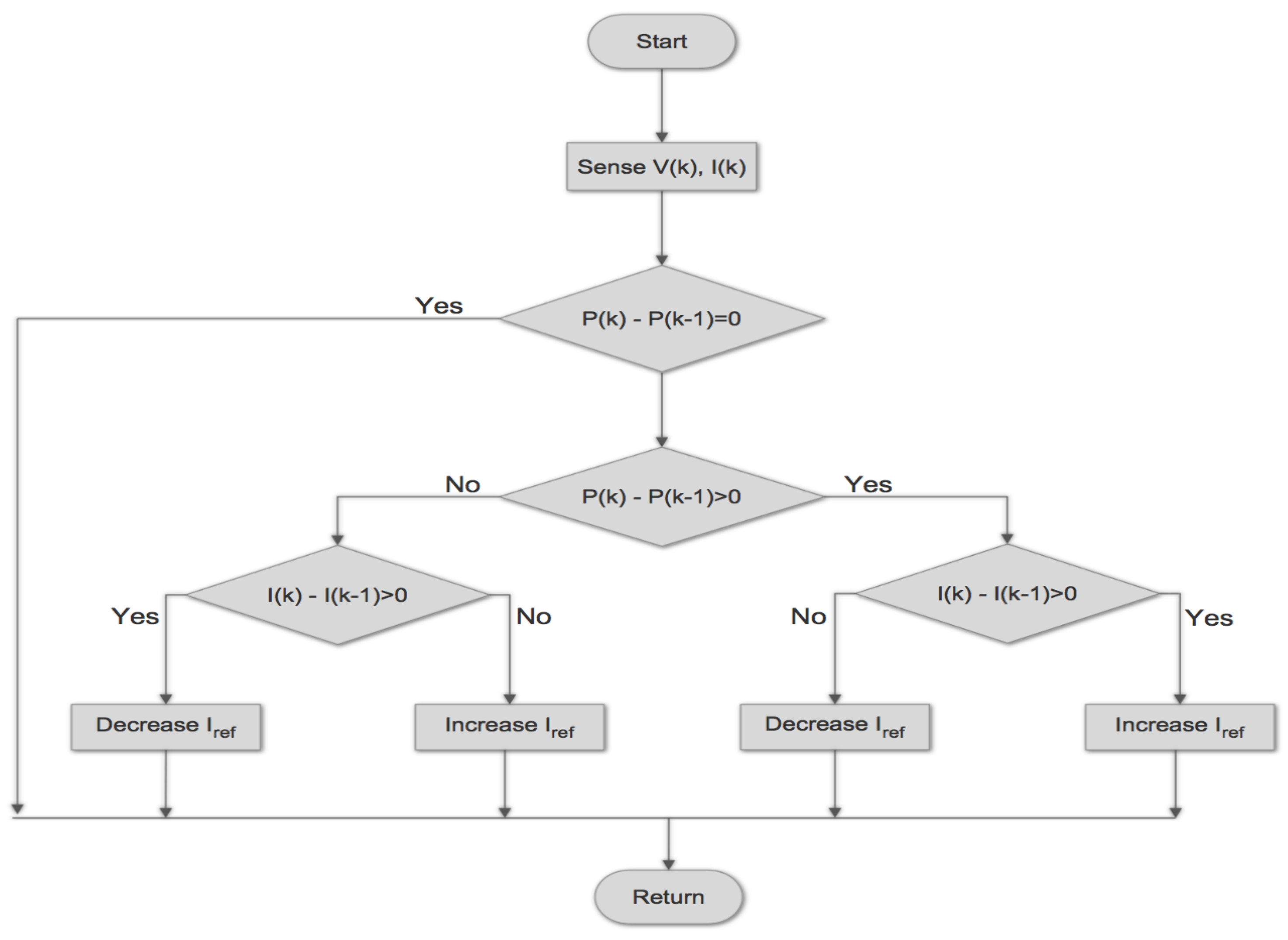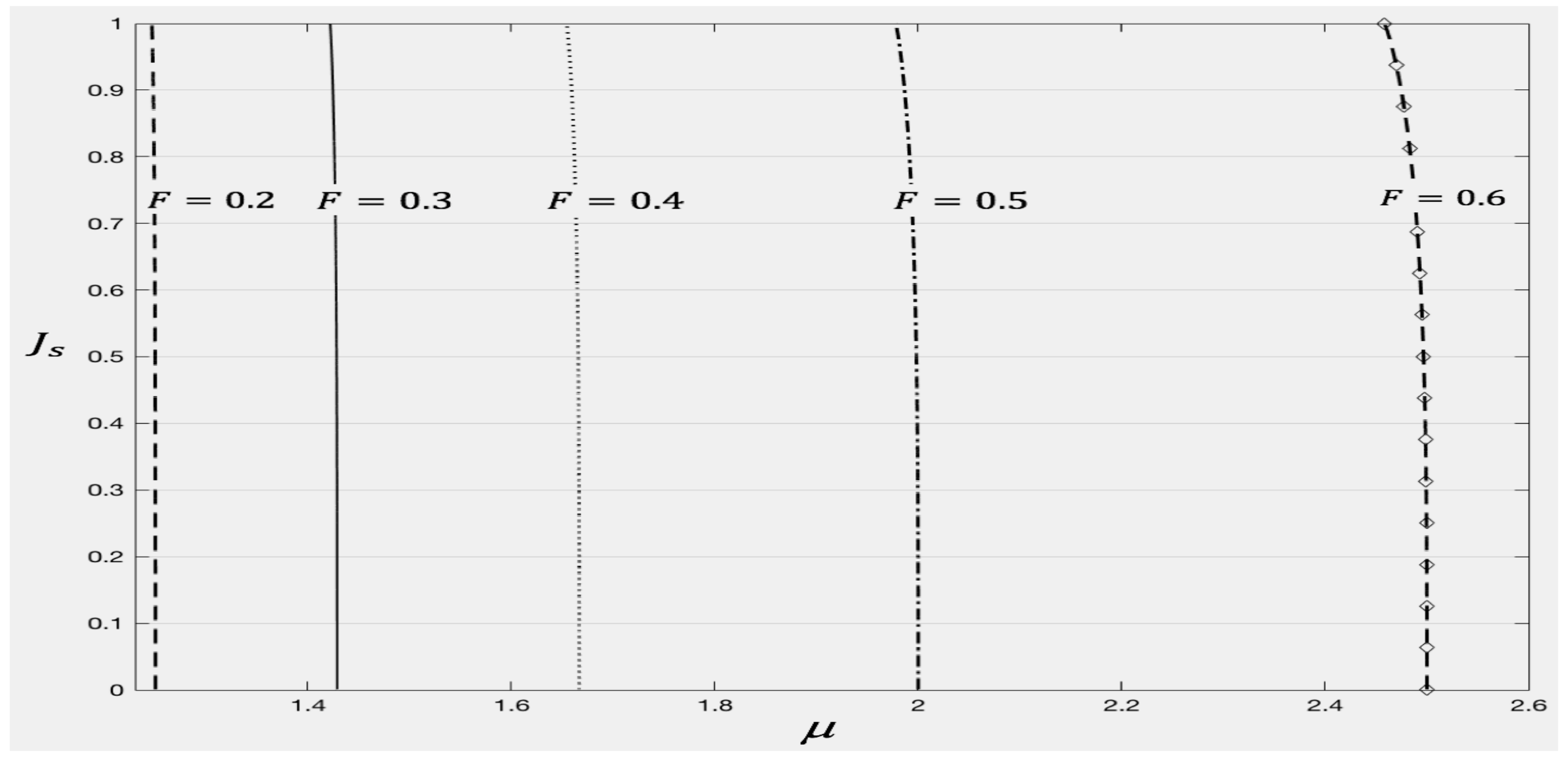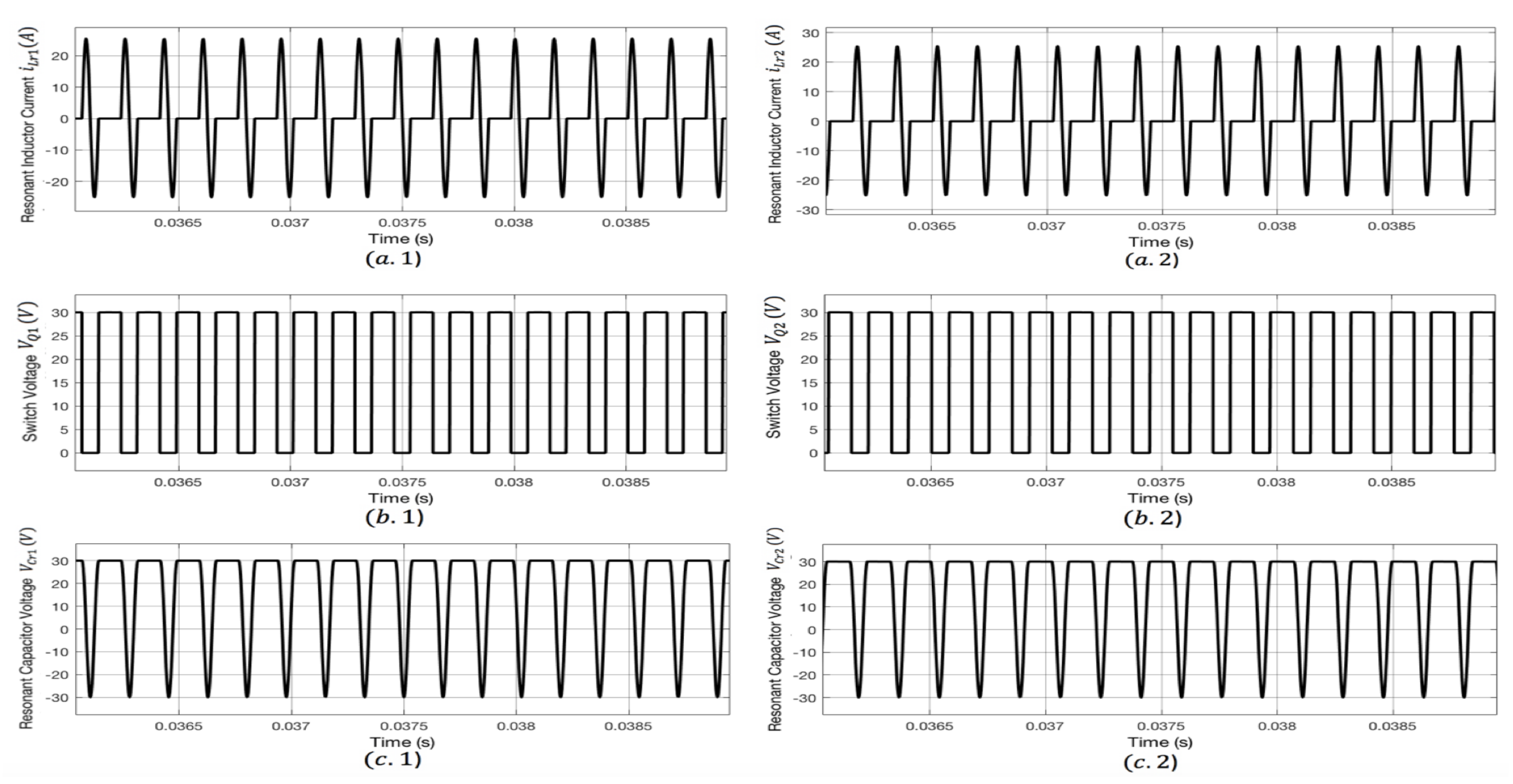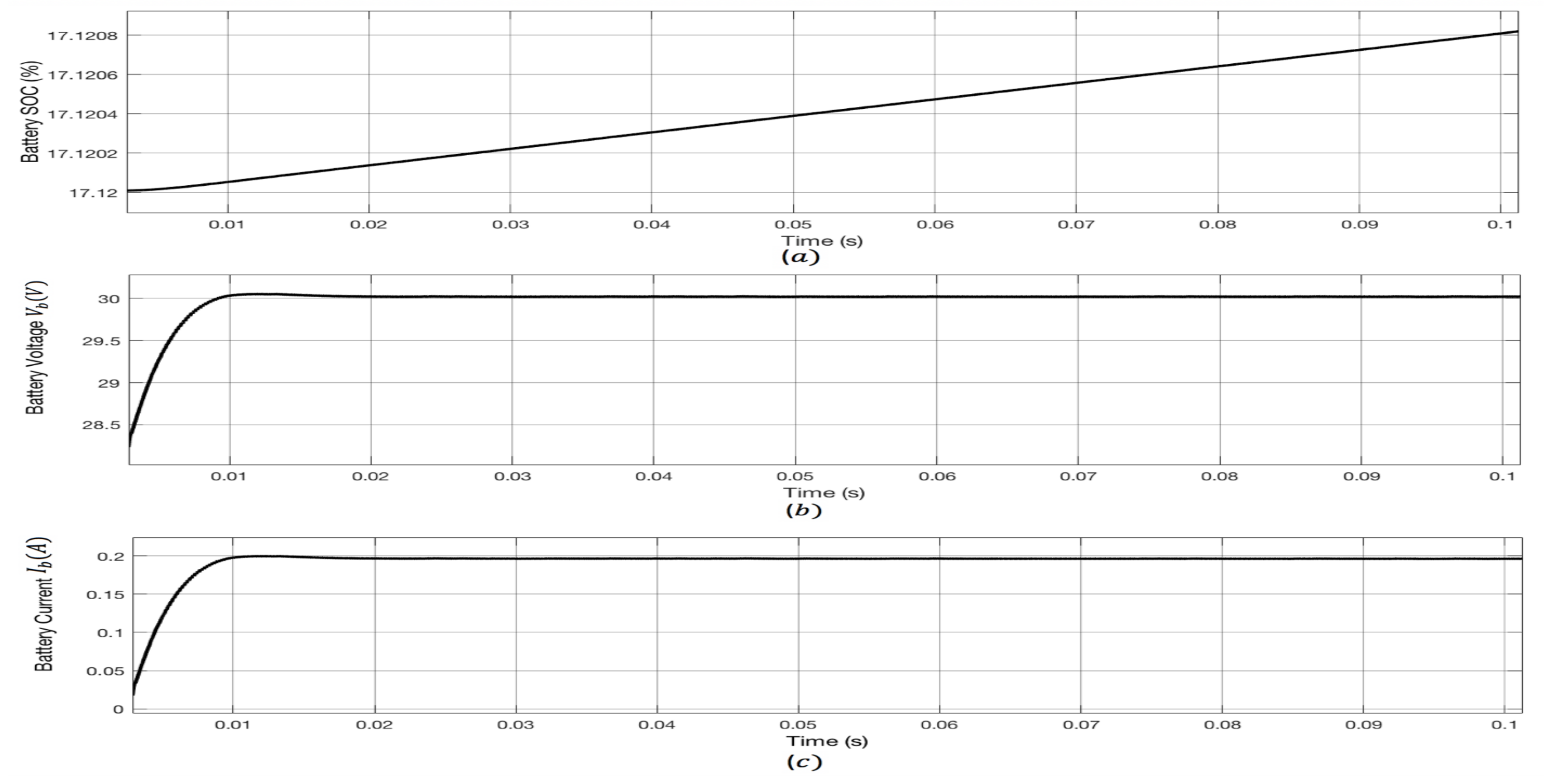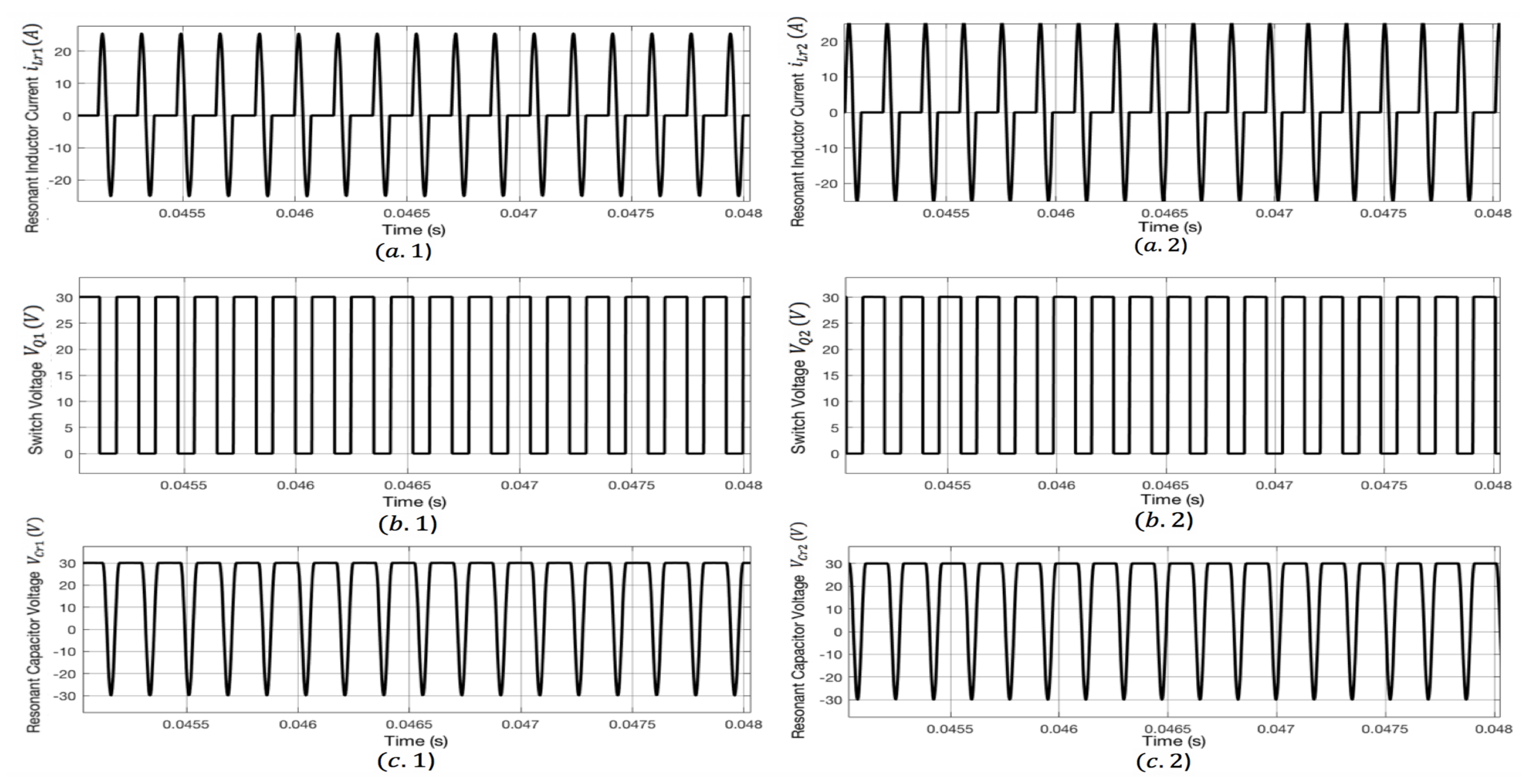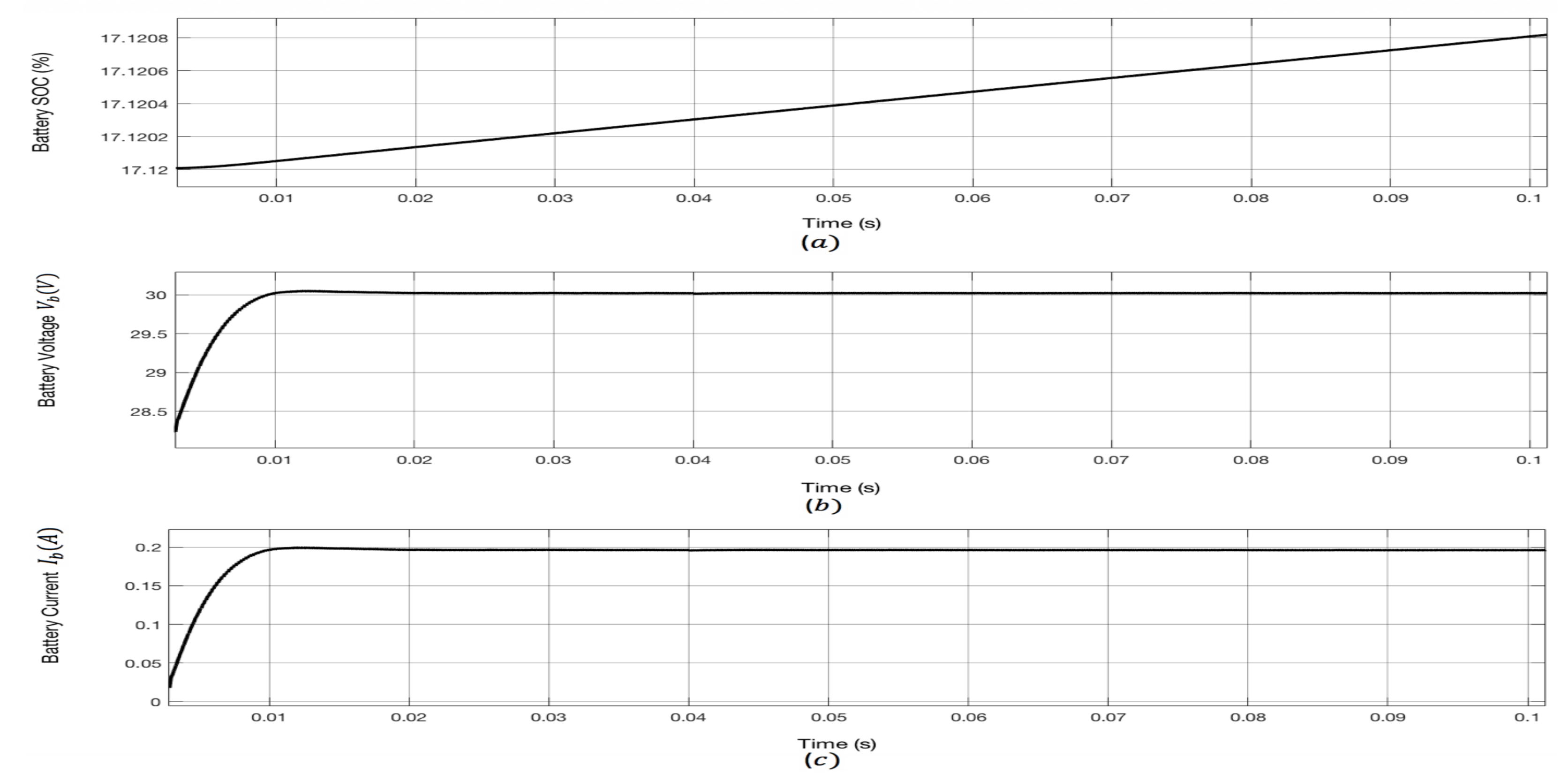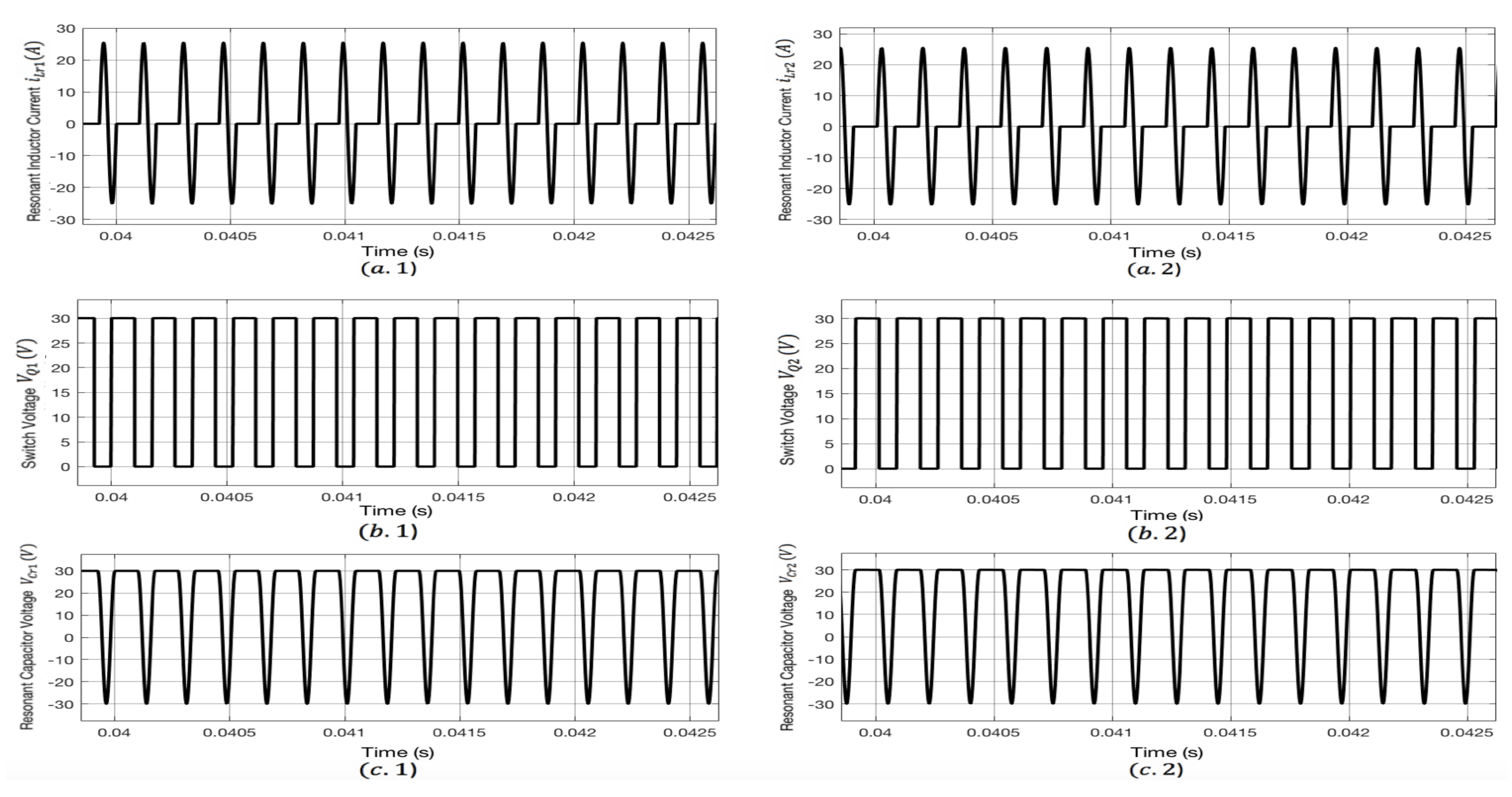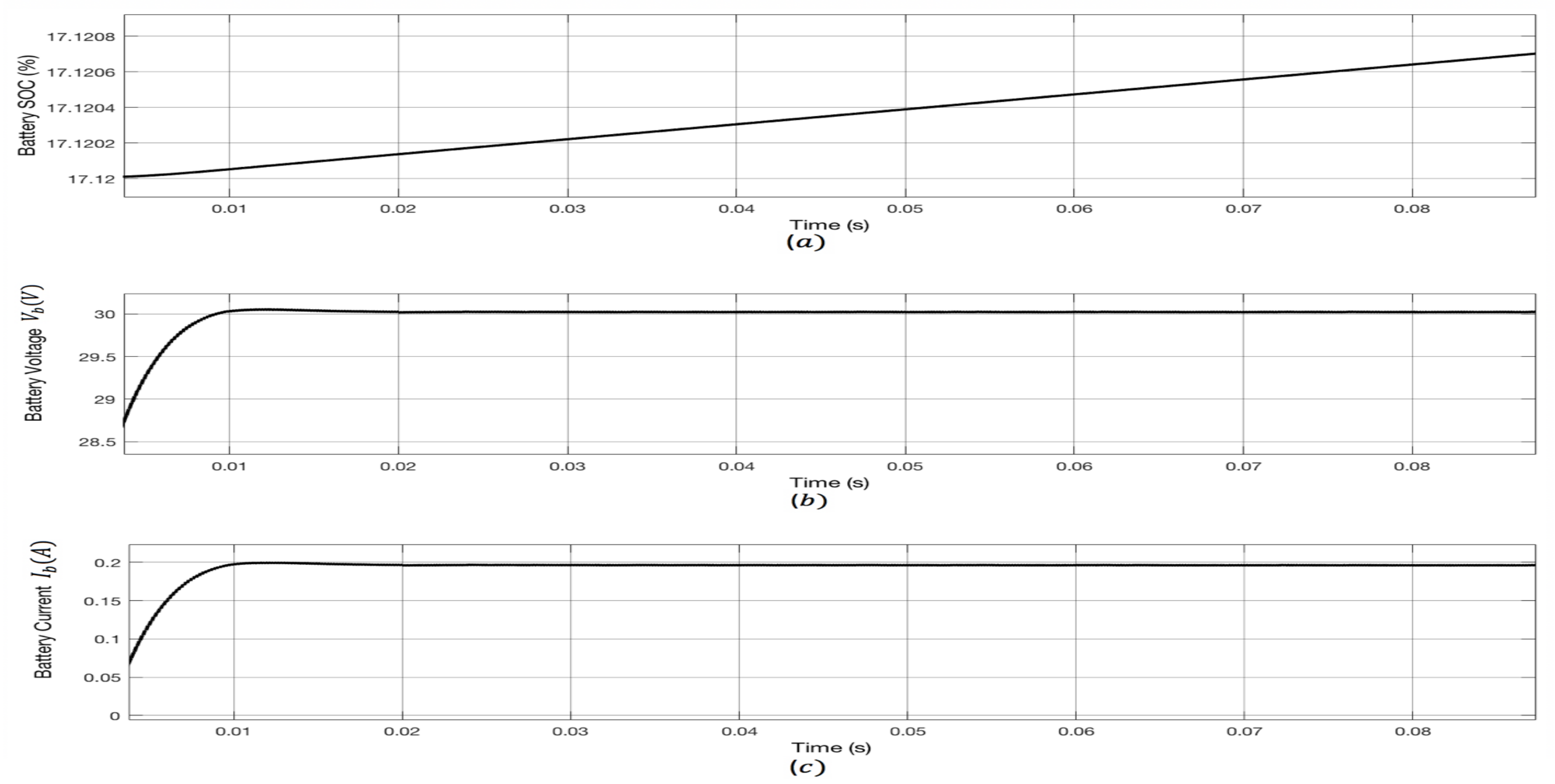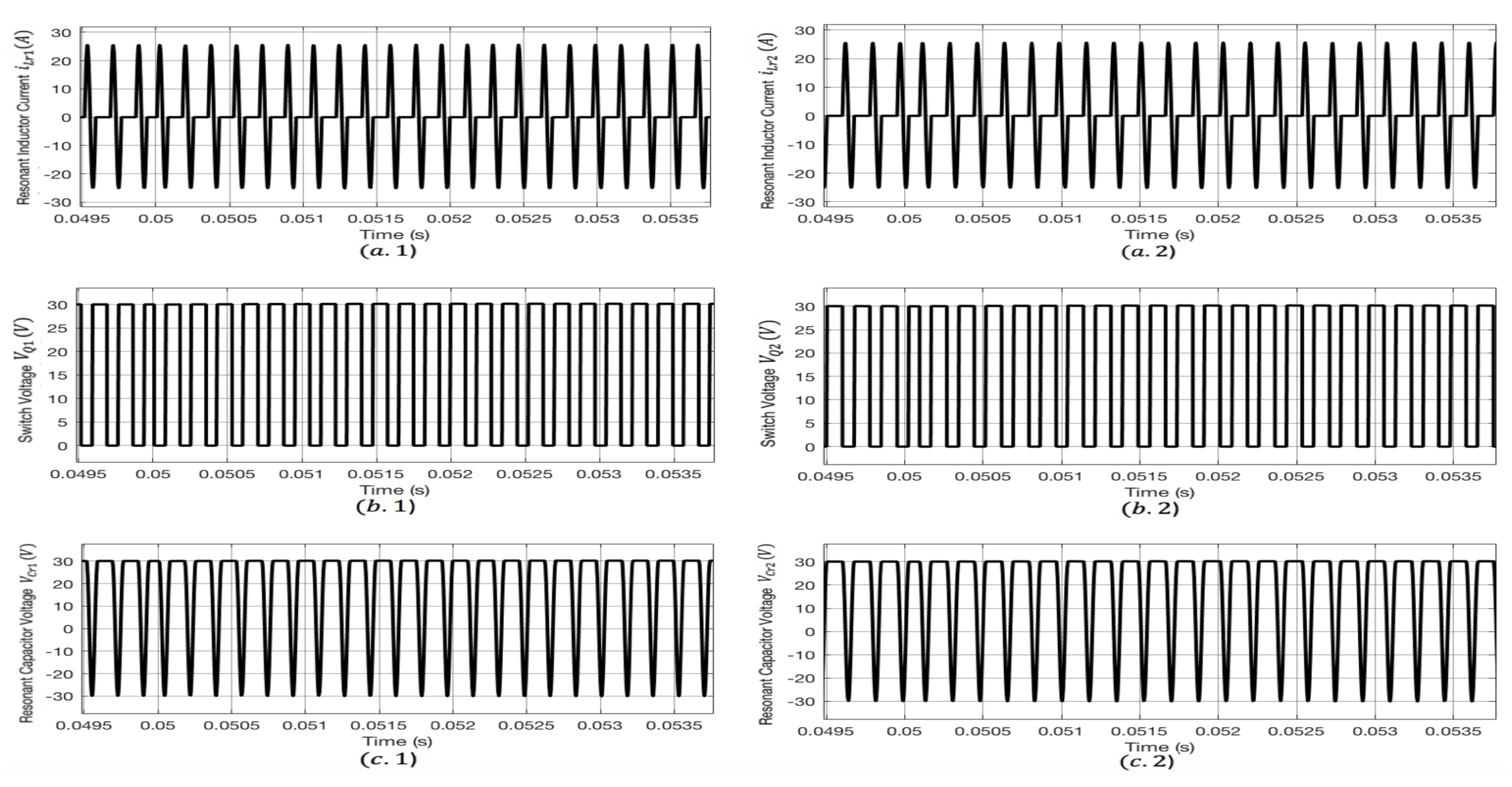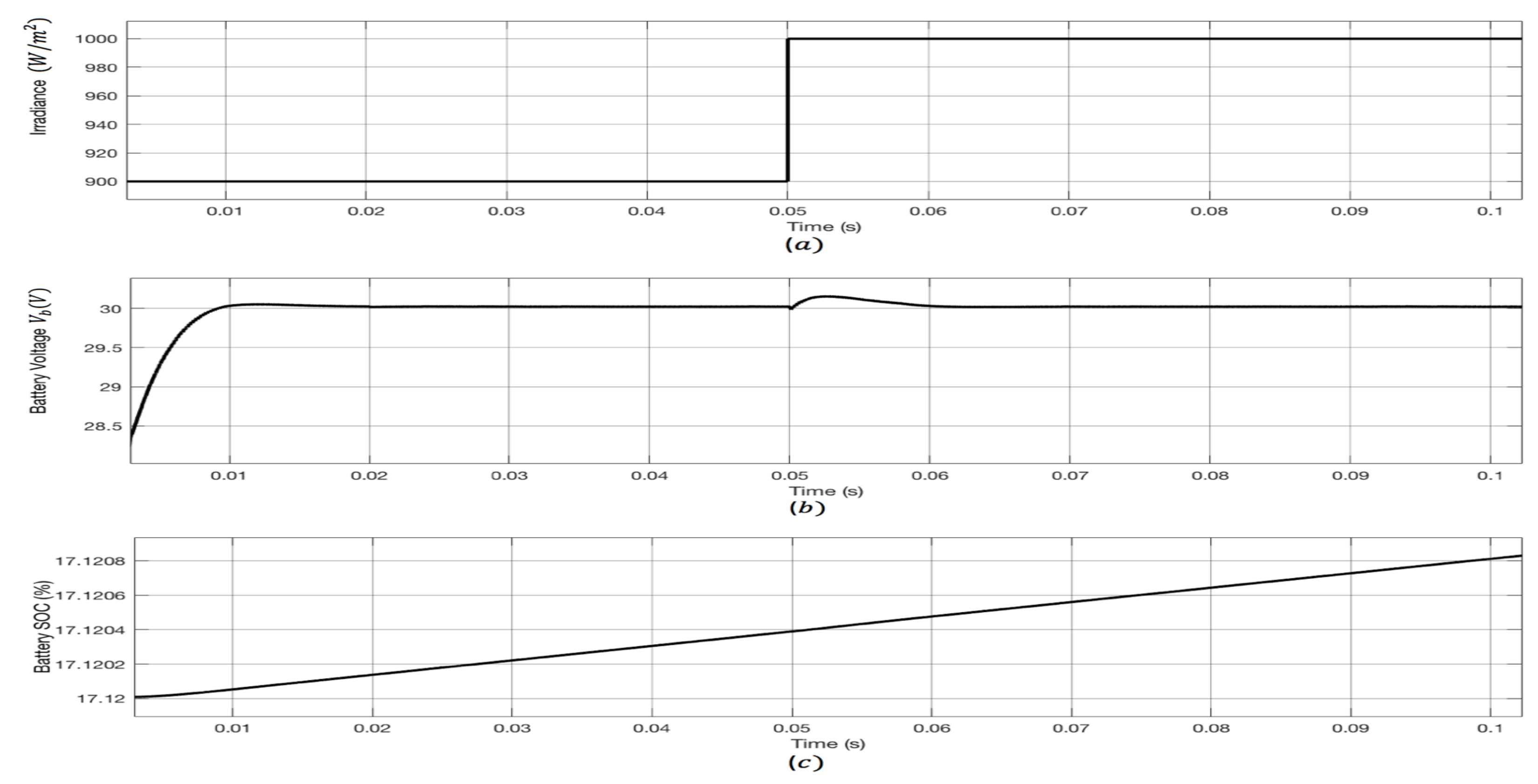1. Introduction
In the past decade, renewable energy has witnessed a tremendous demand as a next generation energy source capable of reducing the impacts of energy exhaustion and global warming. Out of numerous renewable energy resources, solar energy is the most prevalent energy source widely adopted. Photovoltaic (PV) systems have been a prominent area of research to improve energy utilization and support the future demand of PV systems. Typically, a PV system is composed of a DC–DC converter, a maximum power point tracker (MPPT), and a battery for energy storage [
1].
Nowadays, switching mode power supplies are incorporated in most renewable energy interfaces that are used in many applications throughout residential and industrial sectors [
2,
3,
4,
5]. It is of utter importance to accommodate to the increasing demand for small size, low cost and efficient switching mode power supplies. The switching transitions of conventional Pulse Width Modulation (PWM) converters are always lossy due to voltage and current stresses experienced during switching. Conventional boost converters operate using hard-switching to step up the voltage. The switching characteristics of the passive diode cause large spikes during turn-off and turn-on intervals by forcing the switch to have simultaneous nonzero voltage and current [
6,
7,
8]. In addition to that, during hard-switching the MOSFET drain-to-source charge builds up during turn on, which further contributes to the switching losses.
Unlike hard-switching, power losses experienced by DC–DC boost converter can be eliminated using soft-switching techniques by operating the switch either at zero current or at zero voltage. By implementing Zero-Voltage Switching (ZVS) or Zero-Current Switching (ZCS) on DC–DC converters, numerous soft-switching techniques have been proposed to attain high efficiency by reducing switching losses [
9,
10,
11,
12]. By eliminating the overlap of current and voltage experienced by hard-switching, soft-switching is considered more suitable for battery charging circuits. In [
13], a buck converter is designed using ZVS only for the turn-on transition, hence the turning off switching is lossy. This structure is complex with high costs and losses due to the large number of semiconductors and energy storage devices used to design the DC–DC converter. In [
14], two soft-switching DC–DC converter structures are presented. The advantage of this topology is the small number of switching elements and energy storage elements that have been utilized to design the soft-switching circuit. Only ZCS technique is implemented to turn off the power switches, with no ZVS conditions applied, which leads to lossy turn-on transitions.
In this study, a novel control strategy is proposed to facilitate soft switching operation and to enforce maximum power point tracking for improving the overall efficiency of a PV-based battery charging system. To this end, a two-stage parallel ZCS quasi-resonant boost converter is utilized and operated in full-wave mode. Full-wave operation increases the resonant mode interval, and hence, recycles the energy back to the input source by forcing the reverse current flow through an anti-parallel diode connected across the MOSFET [
15,
16,
17]. The proposed strategy controls the switching frequency to maintain ZCS and charge a battery from a PV system. Using an MPPT algorithm, maximum voltage is extracted from the PV system. The merit of the proposed control technique is that it renders an efficient converter by extracting maximum voltage and reducing switching losses while charging a battery.
The organization of this paper is as follows. In
Section 2 a two-stage parallel full-wave ZCS quasi resonant boost converter is utilized as an interface between the PV source and battery storage system. Furthermore, the converter’s model is obtained in this section.
Section 3 discusses the PV module and MPPT algorithm as the input for the converter. This model is then utilized in
Section 4 to derive conversion ratio of the converter, which is used for the proposed switching regime and control strategy.
Section 5 describes the battery charger design parameters. The results are presented in
Section 6, which illustrate the performance of the proposed system. Finally, conclusions are drawn in
Section 7.
2. Operating Principle and Circuit Analysis
Figure 1 shows the schematic diagram of a two-stage parallel full-wave ZCS quasi-resonant converter utilized in this work. In this figure,
and
are the resonant inductors. Furthermore,
,
,
and
are the resonant capacitors and main inductors of the converter, respectively. The output capacitor is represented by
. The switching power pole of the converter in
Figure 1 is represented by the MOSFET switches
and
, along with Schottky diodes
and
. Diodes
and
represent the snubber diodes of switches
and
, respectively. The output voltage of the converter is represented by
which feeds the battery.
To simplify the analysis of the quasi-resonant converter without loss of generality, we assume the voltage drop across all semiconductor elements and diodes in the on-state is negligible. Further, the input current and output voltage ripples are not considered in the design. To satisfy the previous assumptions, the values of the inductors
and
along with the output capacitor
are chosen to be high enough such that the voltage of output capacitor and the current through the inductors are constant DC values. Hence, inductors
and
as well as the PV module are modeled as a DC current source
. Similarly, the battery voltage together with the output capacitor
are replaced by a DC voltage source
as shown in
Figure 2.
The converter utilized in this work has four modes of operation as shown in
Figure 2. Derivation of the converter’s dynamics are presented in detail in this section. The initial state of switches
and
are considered to be off. Further, at
, diodes
and
are conducting.
Mode I: In this mode of operation, both switches
and
are turned on at
as shown in
Figure 2a. The current through the resonant inductors starts to increase from zero until the sum of both currents reach the input current
. Using Kirchhoff’s circuit laws, we have
where
and
are the currents of resonant inductors
and
, respectively. Further,
and
are the voltages across the resonant capacitors
and
, respectively. The initial values of the resonant inductors’ currents are assumed to be zero, hence we have
Using (
2), the currents
and
of both diodes
and
can be found as follows
Diodes
and
will become reverse-biased (off), at
, when
or
. Hence,
, the duration of Mode I can be obtained as follows
Multiplying both sides of (
4) by
, we have
where
which represents the time interval,
, as
in radian.
Mode II: The two auxiliary diodes
and
remain reverse biased (off) from the previous mode. Further, switches
and
continue to be on in this mode as shown in
Figure 2b. This mode is mainly called the resonance mode, as the resonant components
,
,
and
are resonating at a resonant frequency of
. Using Kirchhoff’s circuit laws, we have
By performing some algebraic manipulation to (
7),
along with
and
can be found as
Each switch is connected to a series resonant inductor that is turned off at the second zero crossing of the currents,
and
. Both switches
and
are switched off under full-wave ZCS because of the resonant inductors
and
. In other words,
is turned off when
and
is turned off when
. This mode ends at
, hence Mode II has a duration of
, which is obtained as follows
By rearranging (
9), we have
where the time interval
can be expressed as
in radian.
Under full-wave operation, should be between and . In this case, both switches and are turned off at the second zero crossing of the inductor current at , and this transitions to the next mode.
Mode III (
≤ t ≤
): In this mode of operation, the resonant capacitors,
and
, each continue to charge until reaching the value of the output voltage
. The two auxiliary diodes
and
, as well as
and
, remain turned off in this mode as shown in
Figure 2c. Similar to the previous modes, by manipulating the algebraic expressions and using Kirchhoff’s circuit laws, we have
This mode ends at
, when the voltage of the resonant capacitors
, hence resulting in
and
to start conducting (on). The duration of this mode,
, is found as
Multiplying
to both sides of (
12), we obtain
where the time interval
is equivalent to
in
domain.
Mode IV (
): In mode 4, the switches
and
remain off, however, in this mode, diodes
and
are on as shown in
Figure 2d. By applying Kirchhoff’s circuit, we have
Mode 4 transitions to the next switching cycle when the switches are turned back on.
4. Conversion Ratio and Controller Design
In this section an equation representing the conversion ratio of the utilized two-stage parallel full-wave ZCS quasi resonant boost converter is derived. The obtained conversion ratio reveals that both average values of the converter’s current and voltage are dependent and controlled by the resonant components of the soft-switching converter. The conversion ratio can be derived as follows
where
and
are the output and input currents of the converter, respectively. The input current can be found, using Kirchoff’s current law, as the sum of the resonant inductors’ current and the output current. The conversion ratio
of the proposed converter can be calculated as
where
represents the switching period and
is the sum of
and
.
The average current value of both resonant inductors
can be calculated by dividing the total charge passing through the inductors during the resonance phase over the total switching period as follows
where
. The charges of the inductors during the resonance phase Mode I and Mode II are represented by
and
, respectively. For Mode I,
is found as
Substituting
from (
2) and applying some algebraic manipulations, we obtain the following
where
and
. Further, by using (
8),
in Mode II can be calculated as
where
is the voltage across the resonant capacitor
at the end of mode II, which is equal to the voltage across resonant capacitor
. The voltage across the resonant capacitors at
can be found as
Substituting (
20) and (
21) into (
18), we have
Furthermore, by substituting (
23) into (
17), the conversion ratio
can be obtained as
where
and
F are defined follows
and
and
are the resonant and switching frequencies, respectively.
The variation of the conversion ratio
in terms of
F and
is illustrated in
Figure 6. From this figure, it is evident that the normalized frequency
F impacts
significantly. In the proposed control strategy, the resonant frequency
is fixed; hence
F is varied when the switching frequency
is changed. A control strategy is designed based on the normalized frequency property, by controlling the switching frequency of the switches of the utilized converter to ensure a robust output voltage.
At the steady-state, the voltages of the input inductors of the converter have an average value of zero. To derive an expression for the voltage gain of the utilized converter, the voltages of the input inductors during resonance mode are equated to the input inductors’ voltage for the remaining time at steady-state. The expression is found as
where
is the input voltage of the converter. In addition to that, the on-time duration,
, of both switches is found by adding the on times of the switches in Mode I and Mode II. The on-time duration is expressed as
Equations (
24) and (
26) are the basis of the proposed control strategy and switching regime. Furthermore, the current obtained from the MPPT algorithm block is used to ensure that the input voltage of the converter is at the maximum power point voltage. The reference current is given by
where
is the value of the current extracted from MPPT and
is the measured input current.
Figure 7 illustrates the proposed control strategy and switching regime that controls and regulates the output voltage to charge a battery load at maximum input voltage through soft switching technique.
6. Evaluation Results and Analysis
A test system consisting of the soft-switching topology along with the proposed switching regime and control strategy is implemented using MATLAB Simulink Simscape and its real-time workshop on the DS1103 PPC controller mounted in a dSPACE expansion box. The converter is built using predefined circuit parameters tabulated in
Table 1. The performance of the system is then evaluated through several experiments under various scenarios.
Figure 8 shows the output voltage of the converter without using the proposed controller. The input voltage is varied to check the behavior of the system.
Figure 8 reveals that the output voltage does not reach the desired value. In this case, the output voltage reaches an undesirable value of 38 V.
To improve the results obtained from
Figure 8, the proposed switching regime and control strategy presented in
Section 4 are utilized to overcome irregularities and changes experienced by the converter. The proposed topology maintains and regulates the output voltage of the converter at 30 V DC, regardless of any changes experienced at the input of the converter, due to weather conditions and changes in irradiance levels.
The irradiance of the PV is set to 1000 W/m
;
Figure 9 shows the soft-switching functionality of the implemented two-stage parallel full-wave ZCS quasi resonant boost converter. It is evident from
Figure 9 that the voltage of both switches is zero or in other words turned off at the second zero crossing of the resonant inductors’ currents. The waveforms of both switch voltages and resonant inductor currents confirm the functionality of the DC–DC boost converter at full-wave soft-switching. Moreover,
Figure 10 shows that the converter is able to reach the desired value of 30 V at the output, along with an increase in the battery
, when the irradiance is set to 1000 W/m
.
Furthermore, the irradiance of the PV system is changed to evaluate the behavior of the proposed topology.
Figure 11 and
Figure 12 show the corresponding waveforms of the converter at an irradiance value of 950 W/m
. It is evident from both figures that the desired output voltage of 30 V is reached using full-wave ZCS soft-switching to charge the battery load. Similarly,
Figure 13 and
Figure 14 validate the functionality of the utilized converter along with the proposed controller at an irradiance of 900 W/m
.
Due to the intermittent nature of the PV system, it is vital to evaluate the capability of the proposed topology to sudden changes in the irradiance. In this case, the irradiance is change from 900 W/m
to 1000 W/m
after
s. When the irradiance is altered, the switching still occurs at the second zero crossing of the inductor currents as shown in
Figure 15. Further,
Figure 16 shows that the converter is able to effectively handle the sudden change of irradiance while maintaining the output voltage at 30 V. The proposed controller successfully forces the voltage back to 30 V after
s.
Due to the parallel topology adopted in this work, the ripple of the output voltage is reduced significantly. From
Figure 17, it is evident that the output voltage ripple is approximately 1.5 V without interleaving boost converter; however, for the utilized two-stage parallel topology, the output voltage ripple is dropped down to 0.2 V, as shown in
Figure 18. Furthermore,
Figure 19 shows the currents of the resonant inductors
and
. The resonant inductors’ currents increase and decrease sinuously according to the gate signals.

